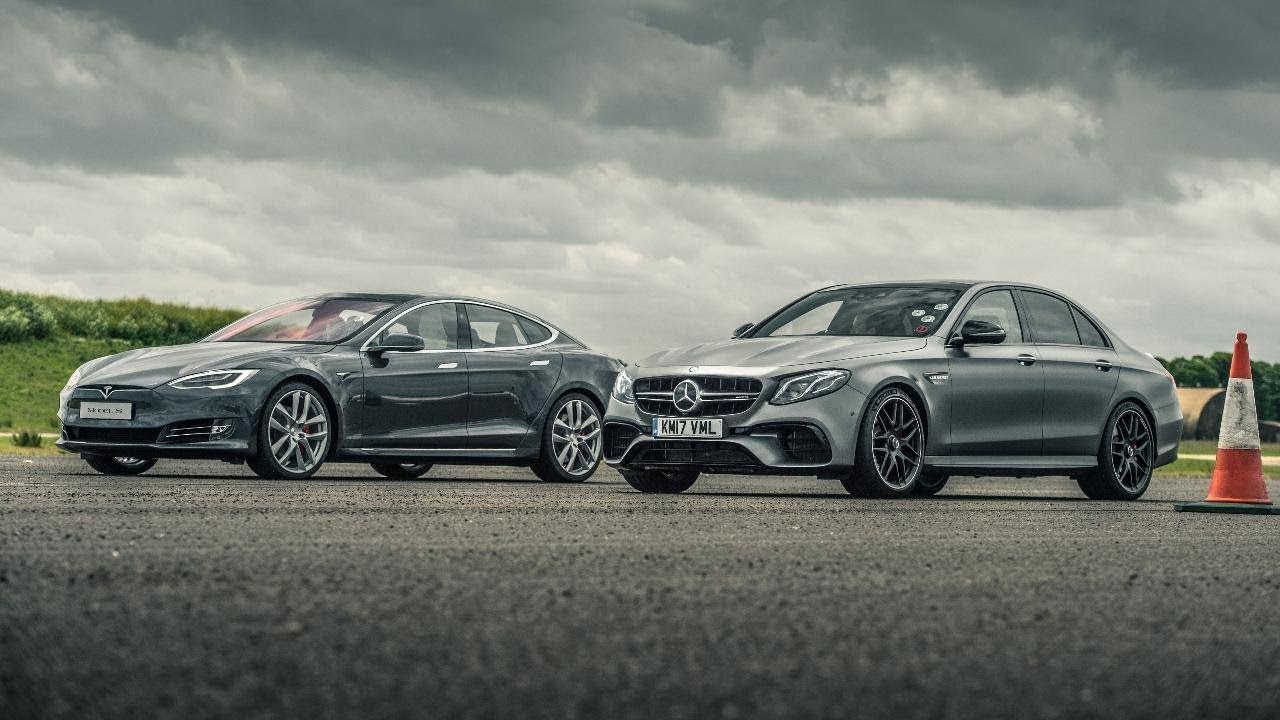A report released by the University of Michigan’s Transportation Research Institute is showing the cost savings to the average vehicle owner versus those same owners driving electric. The report compares gasoline fuel costs state-by-state to the cost of electricity for equivalent miles driven. The differences are shown in both ratios and dollar figures, with owners in some specific states seeing much higher savings when driving electric versus those from other states.
The report is unique in that it ignores the often-politicized arguments for data of this nature; such as the “source-to-use” data often manipulated or argued. Instead, it looks purely from a consumer perspective, showing what kinds of cost savings could be had for the average vehicle owner in any given state.
By comparing the average fuel economy of cars sold with the average expected range of a battery-electric vehicle sold on the market, the report found that drivers in Washington State, Oregon, Idaho, Louisiana, and Utah would save the most by switching to an electric vehicle. Drivers in Hawaii, New Hampshire, Connecticut, Rhode Island, and Massachusetts would save the least. Most of these differences are due to a lower disparity between gasoline costs and residential electricity costs in the latter list of states and a higher disparity between those in the former list.
The report’s data considered the average driving distance and amount per state (NHTSA data), the average fuel economy of vehicles sold in that state (per another UofM study), the average cost per gallon for gasoline state-by-state (according to AAA), and the average cost of electricity in each state (per EIA). The report then compared these to one another.
The average cost of gasoline in the United States, as of December 23, 2017, was $2.441 per gallon. The highest price was in Hawaii at $3.297 per gallon and the lowest was in Alabama at $2.169. High fuel costs, however, did not always translate directly into more savings with a battery electric vehicle. Similarly, lower fuel costs were not necessarily a guarantee that the payoff for going electric would be minimal. Electricity costs could change that.
And they did. The average price of residential electricity in the United States, as of October 2017, was $0.1284 per kilowatt hour. Hawaii had the highest price at $0.2929 per kWh and Louisiana had the lowest at $0.0972/kWh. The higher cost of electricity was more of an indicator of lower gains by going to an electric vehicle than were gasoline prices. Most of the states in the top five for benefiting the least by going electric were also within the top ten for the highest-priced electricity. Yet the states with the lowest-priced electricity were not likely to show up on the top five list for the best gains by getting an EV.
For overall averages nationwide, the cost of driving a gasoline vehicle was $1,117 per year while the average cost of driving a battery electric vehicle was $485. On the whole, most Americans can expect to save at least something if they go to an electric vehicle for most of their driving.
Also interesting was the average fuel economy required in order to meet or better the electric vehicle’s cost savings to the owner. Even in the worst states, where ratios were lowest, the average fuel economy was relatively high. In Hawaii, where a gasoline car owner can only expect to save about $400 per year for getting an EV, the required fuel economy to average that cost ratio out to $0 is 34.1 mpg. In the average state, the fuel economy required is around 57.6 mpg. In the state of Washington, a full 90 mpg is required to break even with an electric car.
These numbers are interesting and should speak directly to consumers at a bare-bones pocketbook level. Buying an EV can mean significant annual savings. The report, Relative Costs of Driving Electric and Gasoline Vehicles in the Individual U.S. States, can be found at this link.

Cybertruck
Tesla updates Cybertruck owners about key Powershare feature

Tesla is updating Cybertruck owners on its timeline of a massive feature that has yet to ship: Powershare with Powerwall.
Powershare is a bidirectional charging feature exclusive to Cybertruck, which allows the vehicle’s battery to act as a portable power source for homes, appliances, tools, other EVs, and more. It was announced in late 2023 as part of Tesla’s push into vehicle-to-everything energy sharing, and acting as a giant portable charger is the main advantage, as it can provide backup power during outages.
Cybertruck’s Powershare system supports both vehicle-to-load (V2L) and vehicle-to-home (V2H), making it flexible and well-rounded for a variety of applications.
However, even though the feature was promised with Cybertruck, it has yet to be shipped to vehicles. Tesla communicated with owners through email recently regarding Powershare with Powerwall, which essentially has the pickup act as an extended battery.
Powerwall discharge would be prioritized before tapping into the truck’s larger pack.
However, Tesla is still working on getting the feature out to owners, an email said:
“We’re writing to let you know that the Powershare with Powerwall feature is still in development and is now scheduled for release in mid-2026.
This new release date gives us additional time to design and test this feature, ensuring its ability to communicate and optimize energy sharing between your vehicle and many configurations and generations of Powerwall. We are also using this time to develop additional Powershare features that will help us continue to accelerate the world’s transition to sustainable energy.”
Owners have expressed some real disappointment in Tesla’s continuous delays in releasing the feature, as it was expected to be released by late 2024, but now has been pushed back several times to mid-2026, according to the email.
Foundation Series Cybertruck buyers paid extra, expecting the feature to be rolled out with their vehicle upon pickup.
Cybertruck’s Lead Engineer, Wes Morrill, even commented on the holdup:
As a Cybertruck owner who also has Powerwall, I empathize with the disappointed comments.
To their credit, the team has delivered powershare functionality to Cybertruck customers who otherwise have no backup with development of the powershare gateway. As well as those with solar…
— Wes (@wmorrill3) December 12, 2025
He said that “it turned out to be much harder than anticipated to make powershare work seamlessly with existing Powerwalls through existing wall connectors. Two grid-forming devices need to negotiate who will form and who will follow, depending on the state of charge of each, and they need to do this without a network and through multiple generations of hardware, and test and validate this process through rigorous certifications to ensure grid safety.”
It’s nice to see the transparency, but it is justified for some Cybertruck owners to feel like they’ve been bait-and-switched.
Energy
Tesla starts hiring efforts for Texas Megafactory
Tesla’s Brookshire site is expected to produce 10,000 Megapacks annually, equal to 40 gigawatt hours of energy storage.

Tesla has officially begun hiring for its new $200 million Megafactory in Brookshire, Texas, a manufacturing hub expected to employ 1,500 people by 2028. The facility, which will build Tesla’s grid-scale Megapack batteries, is part of the company’s growing energy storage footprint.
Tesla’s hiring efforts for the Texas Megafactory are hinted at by the job openings currently active on the company’s Careers website.
Tesla’s Texas Megafactory
Tesla’s Brookshire site is expected to produce 10,000 Megapacks annually, equal to 40 gigawatt hours of energy storage, similar to the Lathrop Megafactory in California. Tesla’s Careers website currently lists over 30 job openings for the site, from engineers, welders, and project managers. Each of the openings is listed for Brookshire, Texas.
The company has leased two buildings in Empire West Business Park, with over $194 million in combined property and equipment investment. Tesla’s agreement with Waller County includes a 60% property tax abatement, contingent on meeting employment benchmarks: 375 jobs by 2026, 750 by 2027, and 1,500 by 2028, as noted in a report from the Houston Business Journal. Tesla is required to employ at least 1,500 workers in the facility through the rest of the 10-year abatement period.
Tesla’s clean energy boom
City officials have stated that Tesla’s arrival marks a turning point for the Texas city, as it highlights a shift from logistics to advanced clean energy manufacturing. Ramiro Bautista from Brookshire’s economic development office, highlighted this in a comment to the Journal.
“(Tesla) has great-paying jobs. Not just that, but the advanced manufacturing (and) clean energy is coming to the area,” he said. “So it’s not just your normal logistics manufacturing. This is advanced manufacturing coming to this area, and this brings a different type of job and investment into the local economy.”
Energy
Tesla and Samsung SDI in talks over new US battery storage deal: report
The update was related by industry sources and initially reported by South Korean news outlets.

Recent reports have suggested that Tesla and Samsung SDI are in talks over a potential partnership to supply batteries for large-scale energy storage systems (ESS).
The update was related by industry sources and initially reported by South Korean news outlets.
ESS batteries to be built at Samsung’s Indiana plant
As noted in a report from Korea JoongAng Daily, the demand for energy storage systems has been growing rapidly in North America, thanks in no small part to the surge in AI investments across numerous companies. With this in mind, Tesla has reportedly approached Samsung SDI about a potential battery supply deal.
The deal is reportedly worth over 3 trillion Korean won (approximately $2.11 billion) and will span three years, according to The Korea Global Economic Daily. A battery supply deal with Samsung SDI could make sense for Tesla as the company already has a grid-scale battery, the Megapack, which is perfect for industrial use. Samsung SDI could simply supply cells for the EV maker.
Production of the batteries would reportedly take place at Samsung SDI’s joint venture factory with Stellantis in Indiana, which is currently under construction. Samsung SDI recently announced plans to use part of that plant’s EV lines to produce cells for ESS, with a targeted capacity of 30 GWh by the end of next year.
Tesla and Samsung’s partnership
At present, only a handful of manufacturers, including Korea’s LG Energy Solution, Samsung SDI, SK On, and Japan’s Panasonic, are capable of producing energy storage-scale batteries domestically in the United States. A Samsung SDI official issued a comment about the matter, stating, “Nothing has been finalized regarding cooperation with Tesla.”
The possible energy storage system deal adds another layer to Tesla’s growing collaboration with Samsung, which is already in line as a partner in the upcoming production of Tesla’s AI5 and AI6 chips. Early sample manufacturing of the AI6 is expected to begin in South Korea, with mass production slated for Samsung’s Texas-based Taylor foundry when it starts operations.
The AI6 chip will power Tesla’s next wave of high-volume projects, including the Optimus humanoid robot and the autonomous Cybercab service. Musk has called the partnership with Samsung a “real collaboration,” adding that he personally plans to “walk the line” at the Taylor facility to speed up progress.










